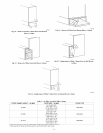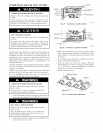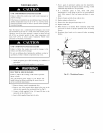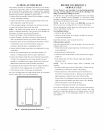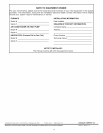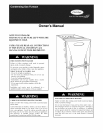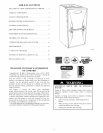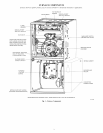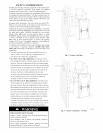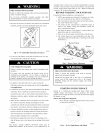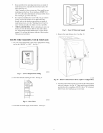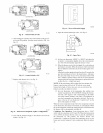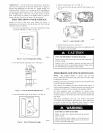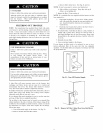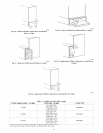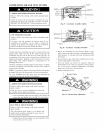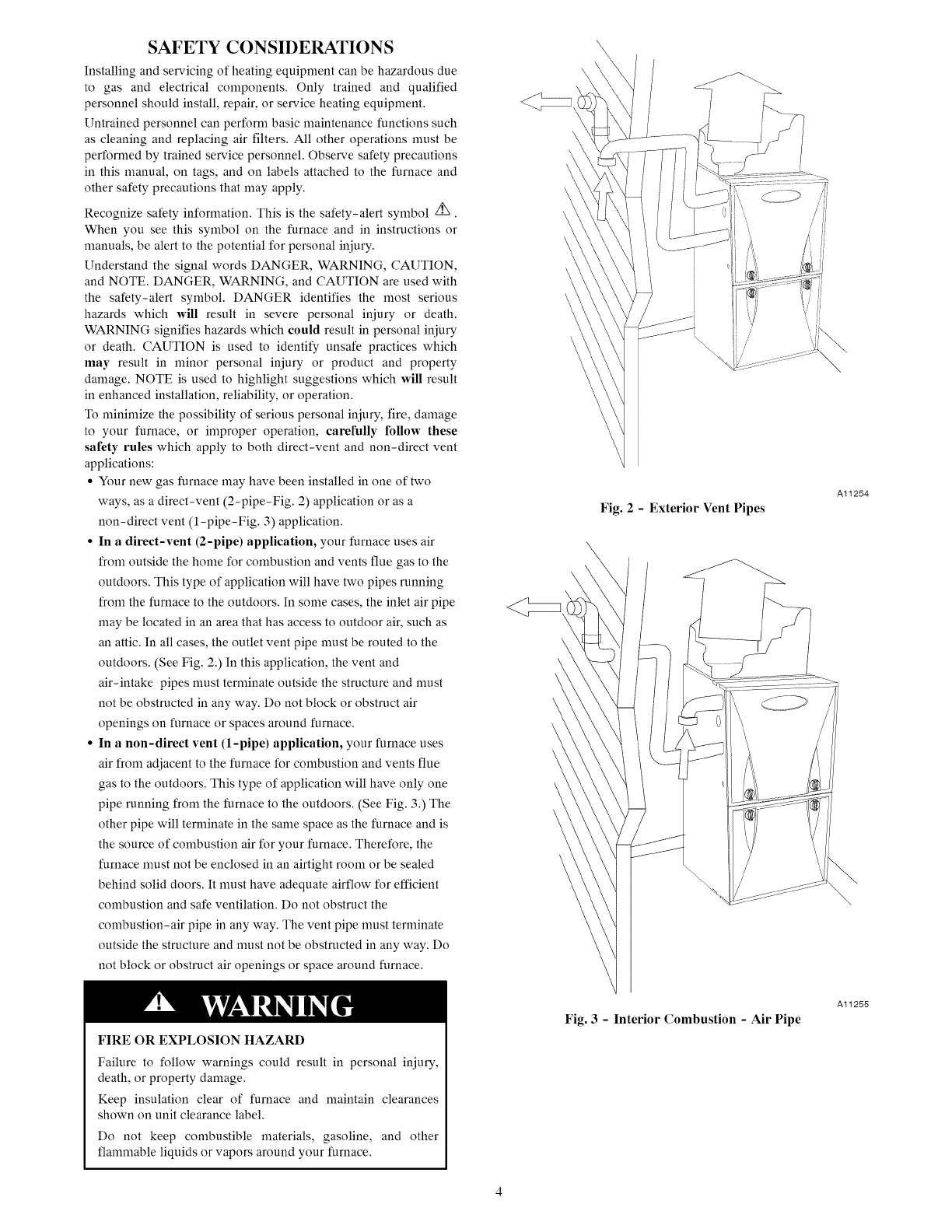
SAFETY CONSIDERATIONS
Installing and servicing of heating equipment can be hazardous due
to gas and electrical components. Only trained and qualified
personnel should install, repair, or service heating equipment.
Untrained personnel can perform basic maintenance flmctions such
as cleaning and replacing air filters. All other operations must be
performed by trained service personnel. Observe safety precautions
in this manual, on tags, and on labels attached to the furnace and
other safety precautions that may apply.
Recognize safety information. This is the safety-alert symbol /_.
When you see this symbol on the furnace and in instructions or
manuals, be alert to the potential for personal injury.
Understand the signal words DANGER, WARNING, CAUTION,
and NOTE. DANGER, WARNING, and CAUTION are used with
the safety-alert symbol. DANGER identifies the most serious
hazards which will result in severe personal injury or death.
WARNING signifies hazards which could result in personal injury
or death. CAUTION is used to identify unsafe practices which
may result in minor personal injury or product and property
damage. NOTE is used to highlight suggestions which will result
in enhanced installation, reliability, or operation.
To minimize the possibility of serious personal injury, fire, damage
to your furnace, or improper operation, carefully follow these
safety rules which apply to both direct-vent and non-direct vent
applications:
• Your new gas furnace may have been installed in one of two
ways, as a direct-vent (2-pipe-Fig. 2) application or as a
non-direct vent (l-pipe-Fig. 3) application.
• In a direct-vent (2-pipe) application, your furnace uses air
from outside the home for combustion and vents flue gas to the
outdoors. This type of application will have two pipes running
from the furnace to the outdoors. In some cases, the inlet air pipe
may be located in an area that has access to outdoor air, such as
an attic. In all cases, the outlet vent pipe must be routed to the
outdoors. (See Fig. 2.) In this application, the vent and
air-intake pipes nmst terminate outside the structure and must
not be obstructed in any way. Do not block or obstruct air
openings on furnace or spaces around furnace.
• In a non-direct vent (1-pipe) application, your furnace uses
air from adjacent to the furnace for combustion and vents flue
gas to the outdoors. This type of application will have only one
pipe running from the furnace to the outdoors. (See Fig. 3.) The
other pipe will terminate in the same space as the furnace and is
the source of combustion air for your furnace. Therefore, the
furnace must not be enclosed in an airtight room or be sealed
behind solid doors. It must have adequate airflow for efficient
combustion and safe ventilation. Do not obstruct the
combustion-air pipe in any way. The vent pipe nmst terminate
outside the structure and must not be obstructed in any way. Do
not block or obstruct air openings or space around furnace.
FIRE OR EXPLOSION HAZARD
Failure to follow warnings could result in personal injury,
death, or property damage.
Keep insulation clear of furnace and maintain clearances
shown on unit clearance label.
Do not keep combustible materials, gasoline, and other
flammable liquids or vapors around your furnace.
\
\
\
\
\
JJi
Fig. 2 - Exterior Vent Pipes
\
\
\
\
\
\
Fig. 3 - Interior Combustion - Air Pipe
Al1254
Al1255



